When you hear terms like “Class I trail”, “Class IV bike lanes”, or “Bike Boulevard”, the level of protection–in other words, safety– from cars may not be obvious. Confusingly, these classes do not go from least to most safe, or even least road work (and money) to more infrastructure and cost.
For both pedestrians and cyclists, the safest facilities are away from cars, which are Class I Facitilies, also known as trails. Least protective are Class III Bike Boulevards. Vehicles pose the greatest threat to cyclists and pedestrians.
Below shows how the safety of various bike facilities stack up. Class III lanes (Bike Boulevards) offer the least protection, and Class IV lanes and Class I trails offer the most.
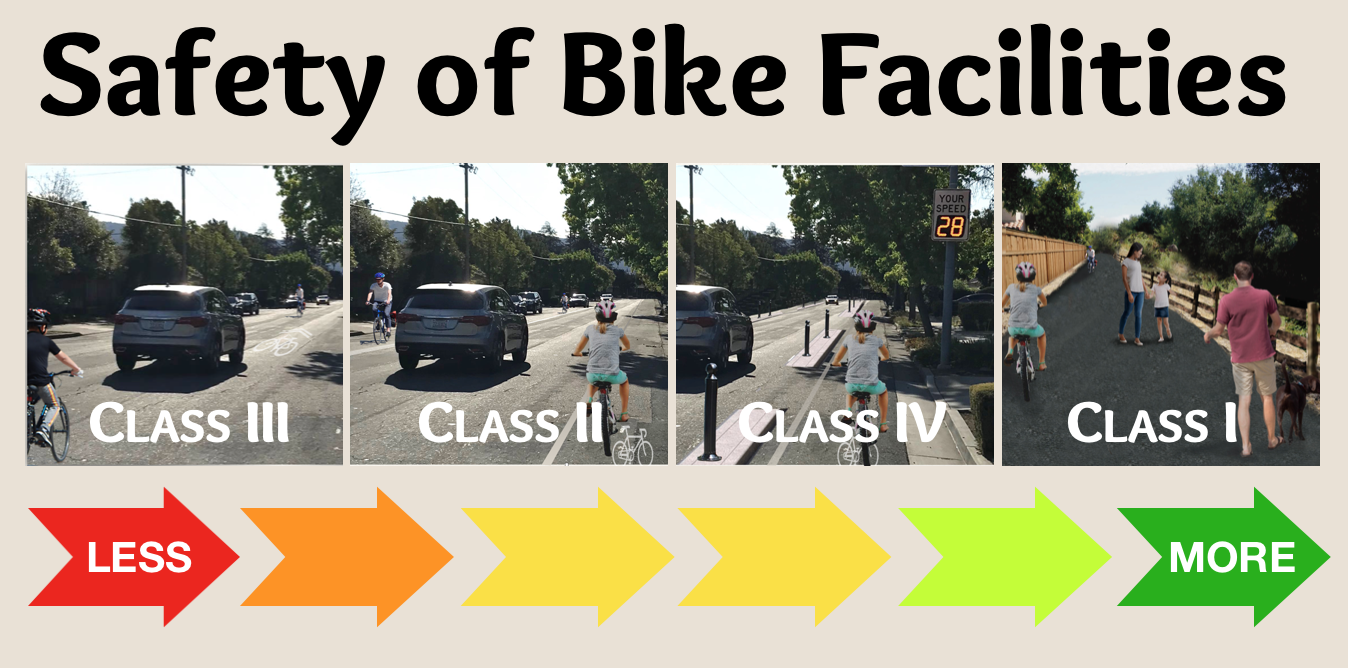
Here’s a quick guide to all the types of bicycling facilities and who they are best suited for:
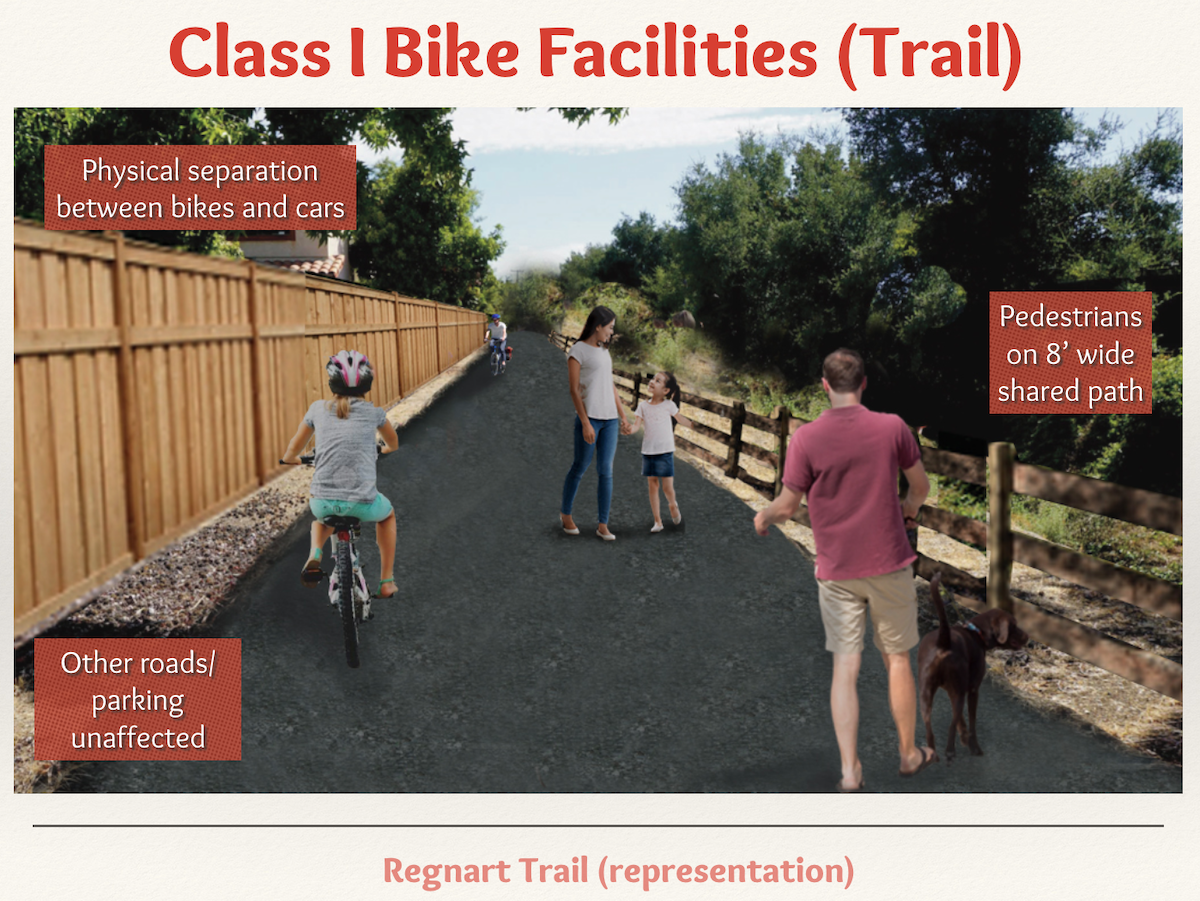
Class I Facilities (Trails)
Class I Facilities are the safest for bicycles. Not just for bicycles, these trails also include facilities for pedestrians that are wider and flatter than sidewalks. Usually the most enjoyable facility to use because of the lack of traffic noise and the continuous length of safe riding without the concerns of vehicles entering or leaving driveways, streets with turning cars, vehicles parked in the bike lane, or obstructions such as trash cans or debris. Excellent for riders of all ages and abilities, including riders just learning how to ride.
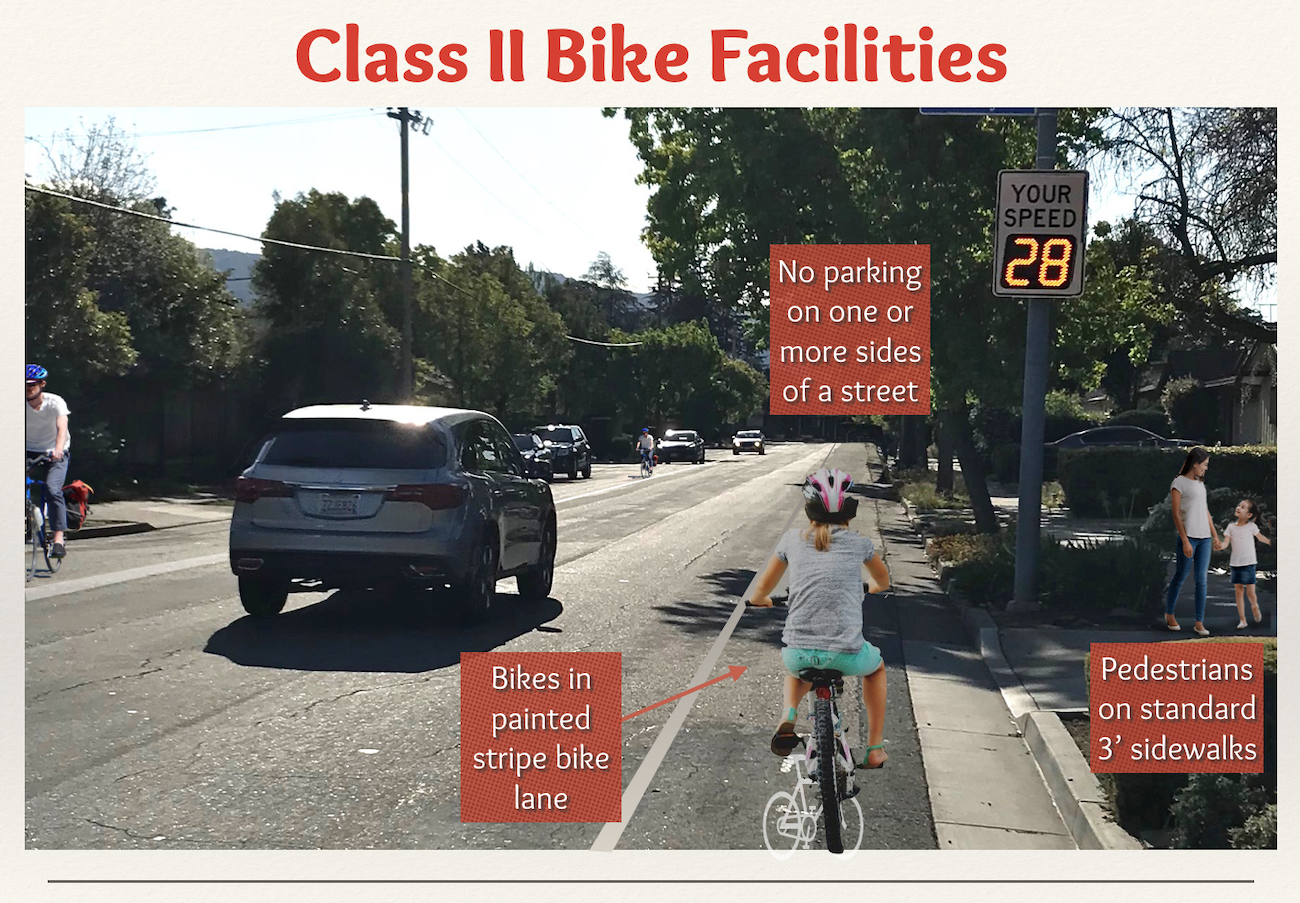
Class II Facilities
Class II Facilities have a painted stripe bike lane at the side of the road. Conflicts occur because vehicles can easily enter and exit from driveways through these lanes and should enter them to turn right. (If they don’t, then they try to turn across the lane, which is very dangerous for bikes.) Adding these lanes generally requires eliminating parking from at least one but possibly both sides of a street, depending on the street width. These lanes are best used by experienced riders and commuters, though fine for all when traffic is light.
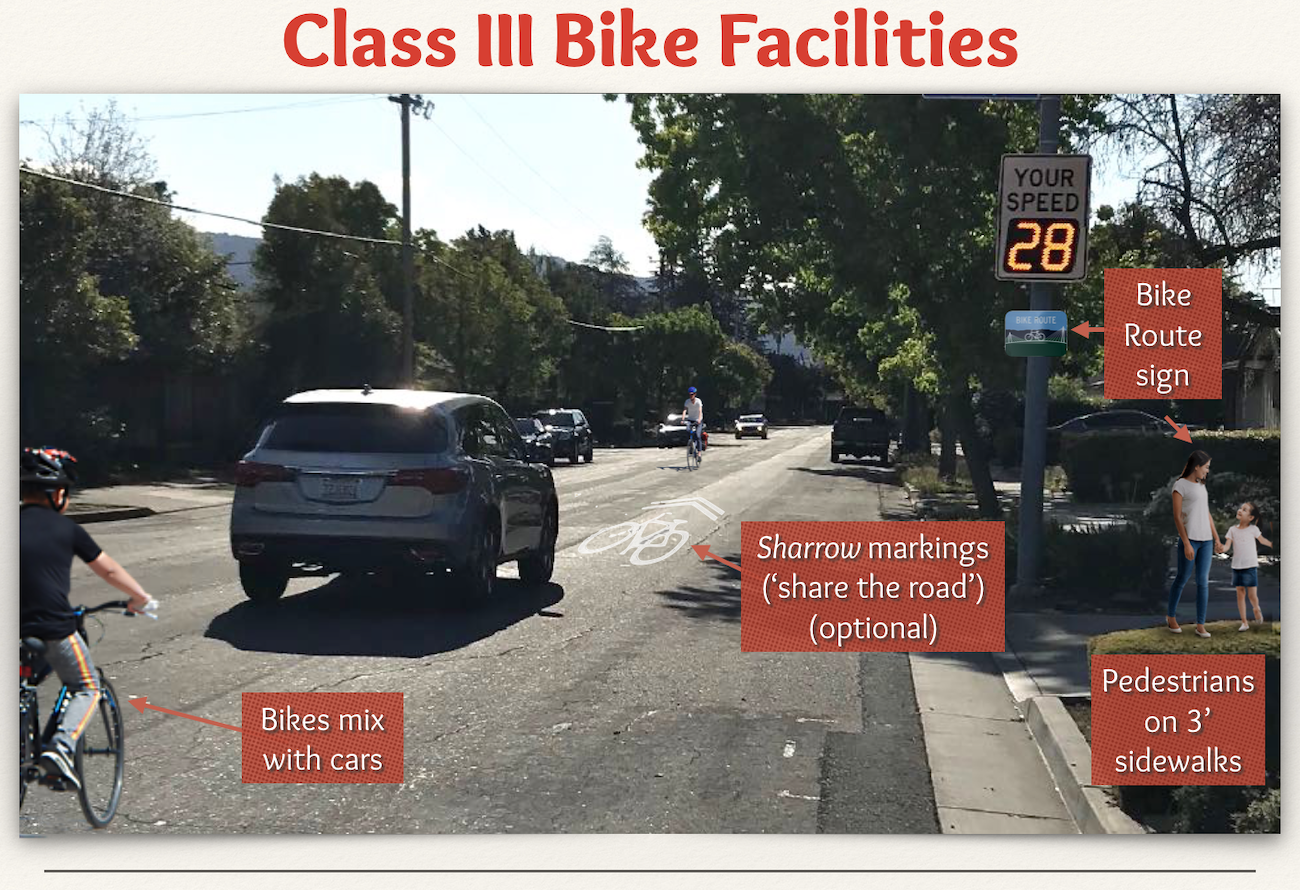
Class III Facilities
Oddly enough, Class III facilities offer less protection than Class II facilities. These should only be placed on low-speed residential streets with no evidence of speeding, as they have bicycles mixing with cars while riding. Class III facilities consist of just signage (“bike route”) and sharrows indicating the road should be shared between cars and bikes, though adding the sharrows is optional. (See “What’s a sharrow?” below.) Class III’s are generally better for the more experienced (not young school-age) riders, as it is necessary to be very aware and careful of traffic that surrounds you as you are riding.
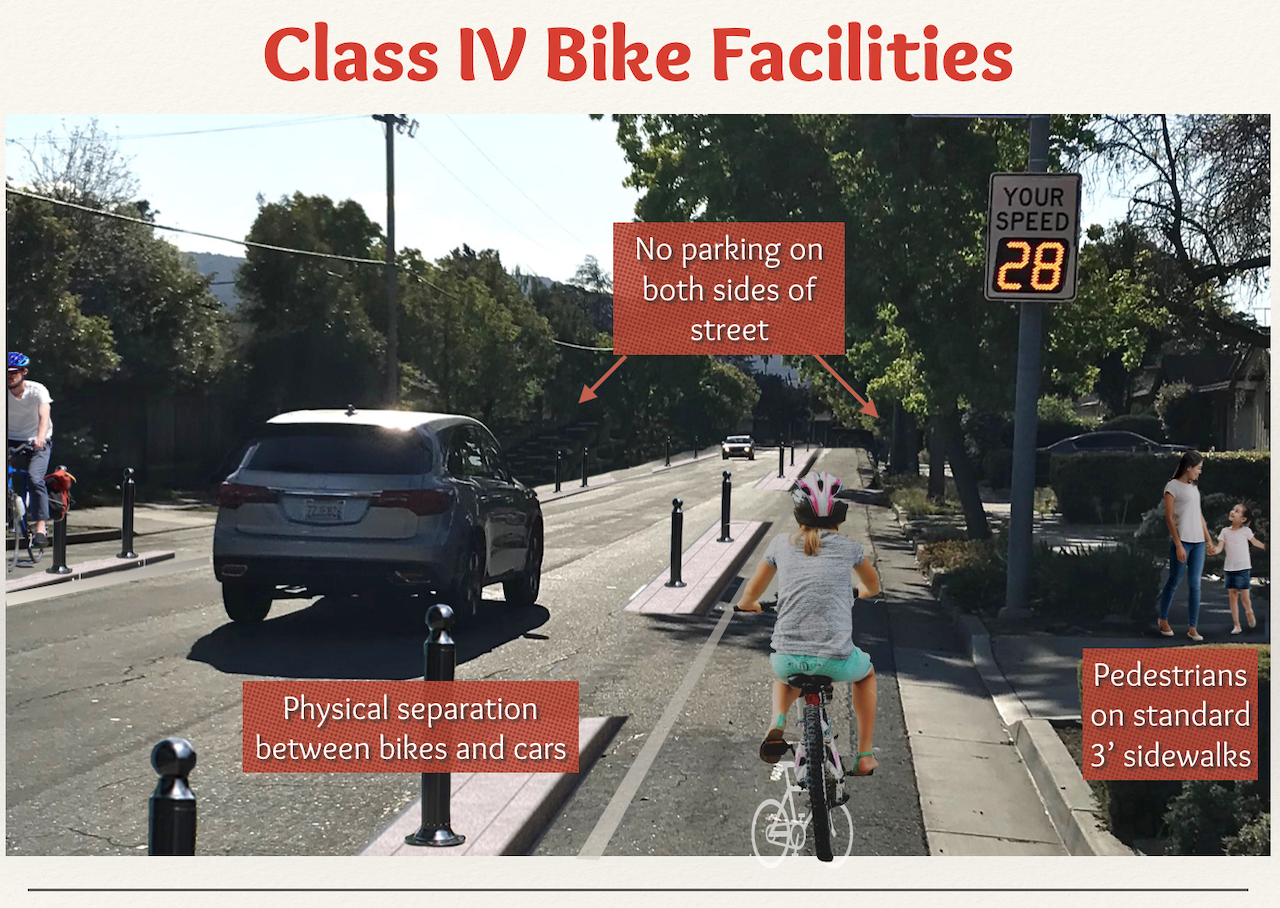
Class IV Facilities
Class IV facilities are the safest option for an on-street bike lane. Class IV’s are physically divided bike lanes, dividing the lane of travel for bikes from vehicles by concrete curbs, posts, planters (or some combination). These can be placed on streets of all types, though unless the road is already extremely wide or has painted (Class II) bike lanes built in to its intial design, parking will generally be lost on both sides of the street. Other benefits to them are that unlike Class II lanes, they will not get blocked by parked cars. Class IV lanes are the most expensive of the bike facilities, as they require the most concrete and can include special signalization (traffic lights). Class IV’s are excellent for riders of all abilities.
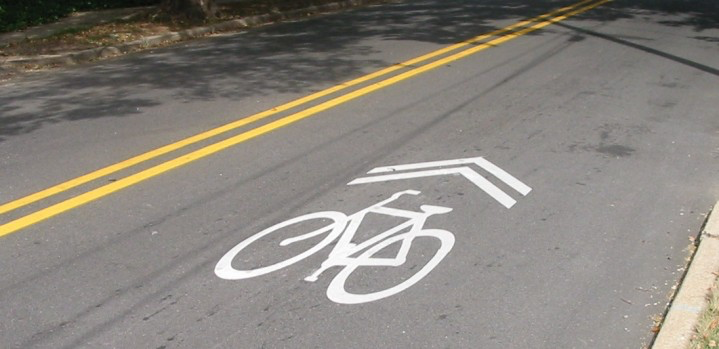
What's a sharrow?
Sharrows tell drivers that they need to share the road with cyclists. It’s a clear signal to vehicles that bikes will be “taking the lane”, or will be riding down the center of the lane that cars drive in. Many drivers do not understand what these markings mean, so honking of horns and angry gestures can sometimes result when a bike does what is correct and legal. Class III lanes often have these painted on the road. Because of the common lack of knowledge by drivers about what these mean, less experienced riders should use extra caution when using Class III bike facilties.
This post is solely the opinion of the author as a private citizen and Walk-Bike Cupertino as an organization and does not reflect the views of any other organization or entity.
